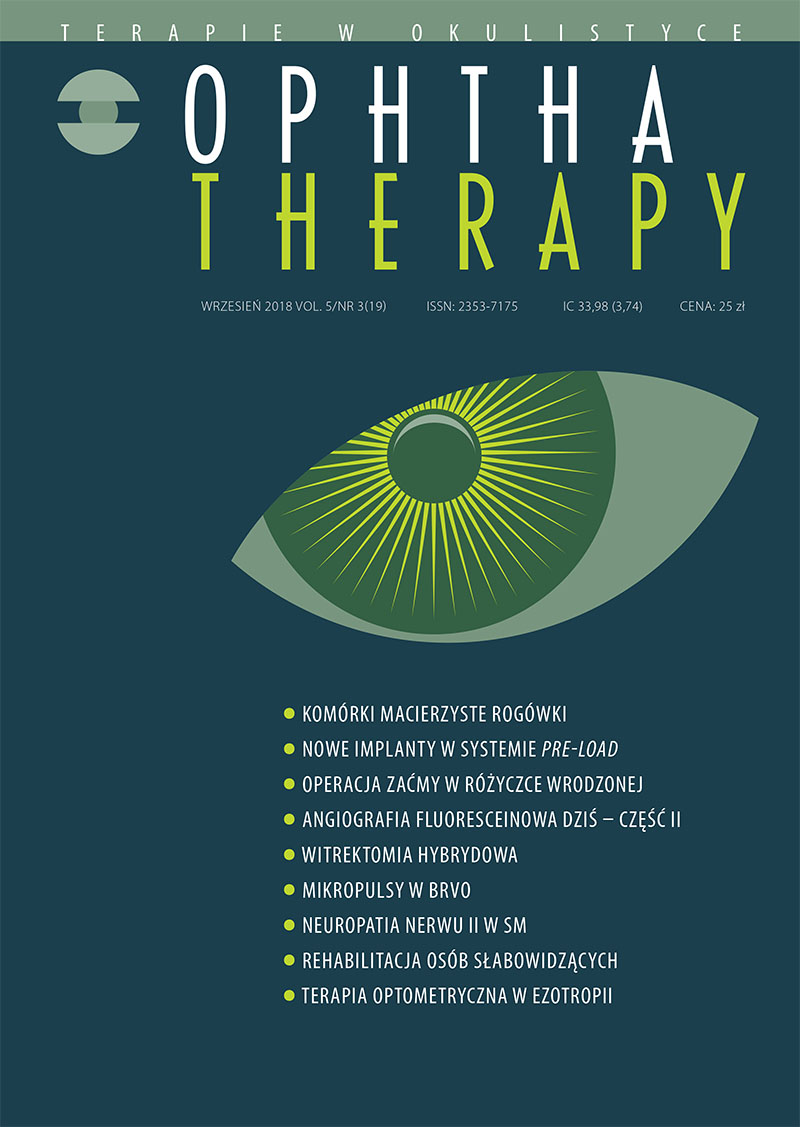Evolution or revolution in therapy of acquired corneal limbal stem insufficiency: Holoclar® – a new medicine containing corneal epithelium stem cells
Main Article Content
Abstract
Treatment of corneal limbal insufficiency has entered a new stage. The cells from the culture were used in the therapy. The tissue produced in the laboratory contains stem cells of the corneal epithelium obtained from the limbal zone. With this technology, replacing the pathological tissue with the cultured epithelium gives its constant renewal, as it happens under physiological conditions. Only 2 mm2 of the corneal limbus is needed to initiate the culture, the harvested cells produce a normal multilamellar, stratified epithelium, that also contains a population of stem cells. Long-term observations confirm that this method can permanently maintain the epithelial surface of the cornea.
Downloads
Article Details

This work is licensed under a Creative Commons Attribution-NonCommercial-NoDerivatives 4.0 International License.
Copyright: © Medical Education sp. z o.o. License allowing third parties to copy and redistribute the material in any medium or format and to remix, transform, and build upon the material, provided the original work is properly cited and states its license.
Address reprint requests to: Medical Education, Marcin Kuźma (marcin.kuzma@mededu.pl)
References
2. Pellegrini G, Ranno R, Stracuzzi G et al. The control of epidermal stem cells (holoclones) in the treatment of massive full-thickness burns with autologous keratinocytes cultured on fibrin. Transplantation. 1999; 68: 868-79.
3. Hultman CS, Brinson GM, Siltharm S et al. Allogeneic fibroblasts used to grow cultured epidermal autografts persist in vivo and sensitize the graft recipient for accelerated second-set rejection. J Trauma. 1996; 41: 51-8.
4. Tsai RJ, Li LM, Chen JK. Reconstruction of damaged corneas by transplantation of autologous limbal epithelial cells. N Engl J Med. 2000; 343: 86-93.
5. Koizumi N, Cooper LJ, Fullwood NJ et al. An evaluation of cultivated corneal limbal epithelial cells, using cell suspension culture. Invest Ophthalmol Vis Sci. 2002; 43: 2114-21.
6. Pellegrini G, Lambiase A, Macaluso C et al. From discovery to approval of an advanced therapy medicinal product-containing stem cells, in the EU. Regen Med. 2016; 11: 407-20.
7. Pellegrini G, Golisano O, Paterna P et al. Location and clonal analysis of stem cells and their differentiated progeny in the human ocular surface. J Cell Biol. 1999; 145: 769-82.
8. Rama P, Bonini S, Lambiase A et al. Autologous fibrin-cultured limbal stem cells permanently restore the corneal surface of patients with total limbal stem cell deficiency. Transplantation. 2001; 72: 1478-85.
9. Pellegrini G, Rama P, Matuska S et al. Biological parameters determining the clinical outcome of autologous cultures of limbal stem cells. Regen Med. 2013; 8: 553-67.
10. Pellegrini G, Dellambra E, Golisano O et al. p63 identifies keratinocyte stem cells. Natl Acad Sci U S A. 2001; 98: 3156-61.
11. Rama P, Matuska S, Paganoni G et al. Limbal stem-cell therapy and long-term corneal regeneration. N Engl J Med. 2010; 363: 147-55.

